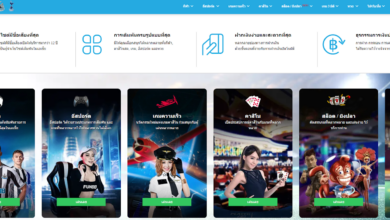Technology In Early Childhood Education: Finding The Balance For Effective Learning

Early childhood education centres note the impact of Information and Communications Technology (ICT) on young children. Most children show exposure to technology literacy; such exposure makes induction and teaching easier for early childhood teachers (ECTs). This reflects a need to review standards for the Education Services Award for ECTs. Technology in education is a guide for evaluating learning outcomes, and it is a parameter of efficiency in the Australian curriculum.
Effective Implementation of Technology for Learning In ECTs
The evolving face of technology for education demands re-imaging of education. It reviews the use of ICT for classroom practice. The case for technology in early childhood education weighs between two aspects.
These are technology-driven practices that promote digital learning materials and innovation. The other face is the education-driven approach; It factors the human element in information technology. The balance of both develops a framework that guides early childhood teachers in using ICT in the curriculum.
The balance model champions the need to support teachers in using ICT. It outlines its areas of concern as follows:
Information and Communications Technology (ICT) Infrastructure
ICT infrastructure is the availability and accessibility of the Internet and computers. It concerns the accessibility of resources that support the exploitation of Information Technology. The resources should be readily available and easy to use for learning.
The expertise of ECTs in Using ICT
The expertise element first involves the teachers’ pedagogical skills. It then explores the technical skills of the teachers in ICT use. The result is a blend of the two fields of expertise, with ICT and teaching intertwined to meet educational objectives.
The ECT should have familiarity with ICT for education, and they should have the appropriate levels of skill to use it. General teaching skills in ICT guide the effective use of technology for teaching. Learning institutions and teacher trainers should expose teachers to hands-on experience in technology.
Teachers with such skills have high efficacy in their tasks. Equipping ECTs with those skills will also transform their attitude towards technology. There is a relationship between technology adoption and teachers’ attitudes to it.
Vision
The vision is the guiding set of objectives that the school community observes. Here, it narrows to achieving the school’s technology adoption goals. It shows the roles of management, teachers, and students in achieving those goals. Teachers have the role of directing learners in the learning process.
Educators pass their beliefs and attitudes towards information technology in education to their learners. They also decide what, how, and when students should learn. They should have the skills and a positive attitude towards information technology.
Then they can leverage their learner’s technological skills. The learner’s skill supports ICT integration into the learning process. Even then, there is a need to increase ICT knowledge in children.
Digital learning materials
Teachers use these digital tools and content for their educational tasks, which are effective when more teachers gain exposure to computer programs. Teachers also need access to digital learning tools, encouraging them to be familiar with them and use ICT more in teaching.
Effective use of digital learning resources requires collaboration. The teachers and other stakeholders unite to create a model for training teachers. Teachers need technological knowledge of technology, pedagogy, and content. Then, they can effectively utilise ICT learning materials for teaching and learning. Teachers who use technology say it eases the learning process.
The development of digital material for early childhood education focuses on four areas:
- Pedagogy and play
- Relationships
- Citizenships
- Health and wellbeing
Arming Instructors with ICT for Effective Teaching
Teachers work in collaborative and leadership capacities. They implement the balance required for technology use for effective early childhood education. Ultimately, technology and digitisation improve the quality of learning in early childhood centres. The future is making it a precondition for teachers to acquire ICT expertise for teaching.










